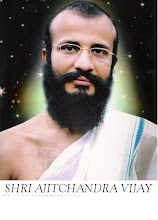Introduction
The purpose of a symbol is to provide an identity or image to an entity. It is basically an abstract view of the core values that uniquely identify an entity. The entities can be various things. For instance, a flag is the symbol that uniquely identifies a country and may have some special core values associated with that country. In the context of companies, a logo can be considered a symbol or emblem. In the context of religion, it becomes a bit difficult to find a unique universal symbol or emblem, partly because there are a lot more concepts and values that may not be easy to abstract in one image and also because there is not a single governing body (like the United Nations) which dictates a religion. In reality, a religion can have multiple symbols which are considered important and provide a symbolic view of various core values and concepts. It is possible for a religious symbol to have multiple meanings or may be shared among multiple religions.
The purpose of this article is to provide the origin and the meaning of the Universal Jainemblem and list other symbols that are found in the Jain literatures. Some of these are taken from the ancient Jain scriptures which are mostly handwritten.
Jain emblem
In 1975, during the auspicious 2500th Nirvana anniversary of Lord Mahavir Swami Ji (last Jain monk to attain moksha or enlightenment), the Jain community at large collectively chose one image as an emblem for the Jain religion. Since then, this emblem is used in almost all of the Jain magazines, wedding invitation cards, Jain festival (like kshamavani, diwali, etc.) cards, and every magazine with links to events related to Jain society. Use of this emblem helps to create a culture showing dedication and trust for the religion and the values that are represented by the emblem.
Fundamental concepts
The Jain emblem is composed of many fundamental concepts and symbols. The outline of the image represents the universe as described in Jain scriptures. It consists of three LOKS (realms). The upper portion indicates URDHAVA LOK (heaven), the middle portion indicates MADHYALOK (material world) and the lower portion indicates ADHOLOK (hell).
The semi-circular topmost portion symbolizes SIDDHASHILA, which is a zone beyond the three realms. All of the Siddhas (liberated bodiless souls) reside on this forever, liberated from the cycle of life and death. The three dots on the top symbolizes TRIRATNA (three jewels) – SAMYAK DARSHAN (right belief), SAMYAK GYAN (right knowledge), & SAMYAK CHARITRA (right conduct). Every creature in this world can become free from the cycle of life and death. This gives the message that it is necessary to have TRIRATNA in order to attain MOKSHA.
In the top portion, four arms of SWASTIKA symbolizes the four GATI (destiny): NARAK (demon), TRIYANCH (animal), MANUSHYA (human) and DEV (angel). It represents the perpetual nature of the universe in the MADHYALOK (material world), where a creature is destined to one of those states based on their Karmas (deeds). It also represents the four columns of the Jain Sangh (community): Sadhus, Sadhvis, Shravaks and Shravikas - monks, nuns, female and male laymen. It also represents the four characteristics of the soul: infinite knowledge (Anant Jnan), infinite perception (Anant Darshan), infinite happiness (Anant Sukh), and infinite energy (Anant Virya).
The symbol of hand in the lower portion shows fearlessness and symbolize the feeling ofAHIMSA (non-violence ) towards all the creatures in this world. The circle in the middle of the hand symbolizes SAMASARA (reincarnation cycle) and the 24 spokes represents the preaching from the 24 Tirthankars (enlightened souls), which can be used to liberate a soul from the cycle or reincarnation.
The meaning of the mantra at the bottom (PARSPAROGRAHO JIVANAM) is "Live and Let Live". All creatures should help one another.
In short, the Jain emblem represents many important concepts to show the path to enlightenment by following the basic principles of AHIMSA (non-violence), TRIRATNA (right belief, right knowledge, and right conduct) and helping others.
Usage
It is important that an emblem is used consistently in the same format to preserve its value and the meaning. There are many variations of the symbol that are in use currently, however they do not show all the fundamental concepts embedded in the original emblem.
Other Jain symbols
The OM symbol is used in ancient Jain scriptures to represent the five lines of the Namokar mantra[1], which is the most important part of the daily prayer in Jain religion. The Namokar mantra honors the five Panch Parmeshtis (great virtuous entities). The five parmeshtis are:
- Arihantas: enlightened beings (Tirthankars or Jinas)
- Siddhas: liberated souls
- Acharyas: spiritual leaders
- Upadhyays: spiritual teachers
- Sadhus and Sadhvis: spiritual practitioners

No comments:
Post a Comment